Interview: Chris Burkard
The self-taught, globe-trotting photographer on his wild adventures and spending the night in a Russian jail

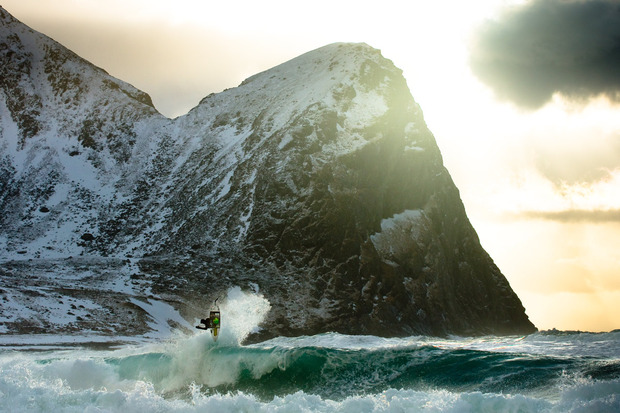
Photography is among the most competitive creative fields. With the advent of accessible digital SLR cameras and numerous social sharing outlets, it’s harder than ever to wade through what’s good to find what’s great. Based in a small town on the central California coast near his childhood home, Chris Burkard is among the most successful young photographers and perhaps one of the most unlikely. Completely self-taught in both digital and film photography, Burkard has circled the globe shooting large-scale commercial and editorial projects for clients like Toyota, Patagonia and Volkswagen as well as holding editorial positions and major surf magazines. What sets him apart from his peers, aside from a willingness (perhaps more of an unyielding wanderlust) to visit places most people couldn’t find on a map, Burkard takes a methodological yet passionate approach to his work. We caught up with the 27-year-old to learn more about his process, inspirations and challenges in his work.

You’re always hopping around the globe to far-flung destinations. What are you up to right now?
From November to February I’ve been spending lots of time at home in California, in March the travel picks up again. I’ve got trips lined up to Norway, Iceland and—a bit closer to home—Oregon. My work is really split up in three ways: commercial, editorial and also social endorsements. It’s funny how the role of a photographer is changing these days. With social media it’s evolved things so much in terms of marketing. Instagram has become one of the biggest marketing tools in the world. I’m just starting to stay privy to it and not get too far behind.
With Instagram and all of my work, I like to change it up. I don’t want to just post surf photos or travel photos. I need to be able to liaise with different types of clients. I’ve done some work with Toyota, and I like to take car photos. I try to mix it up with car work and create a sense of adventure. For me its a passion thing, I enjoy it and it’s fun. Things can get monotonous. Toyota is one of my bigger clients they just released the new 4Runner and I shot the last campaign. I enjoy shooting automobiles. It fits in with what I like to do with adventure and travel—especially the 4Runner. I worked with snowboarder Travis Rice, motocross rider Andy Bell kayaker Rush Sturges. We just kind of goofed around a mountain town and hung out for the shoot. It’s stuff you can relate to. Not everyone can relate to dropping a hundred foot cliff like Travis, but you can relate to messing around with your friends.
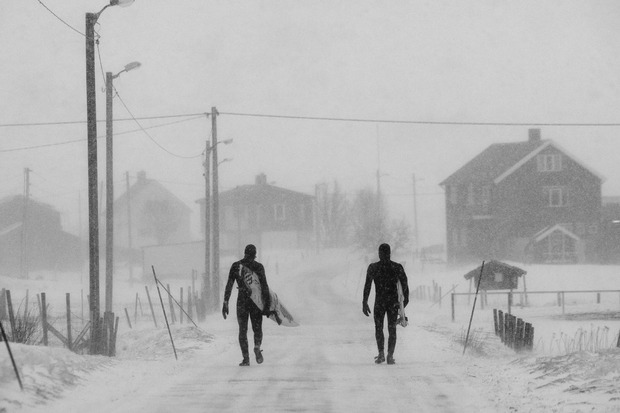
At 27-years-old you’ve accomplished a lot. How did you get your start?
That’s a funny one. For me, it was never really about surf photography. For me it was always about going out and being in nature. I came from humble means, my family never traveled. In high school, I was into art, then I picked up a camera and it was an epiphany. I could be out in the ocean and in nature and still be creating. I started around 19-years-old and it wasn’t until I decided to quit my job and give everything to photography before it really took off. I was working odd jobs at the time, landscaping and that sort of this. Those experiences taught me a lot. I originally wanted to be a landscape photographer but there was no money in it [laughs], so surfing was more action-oriented.
You’re not typically traveling to board shorts and palm trees destinations. What compels you to visit these places?
People get enough of that. The entire industry is saturated with that sort of imagery. Who cares about Hawaii and seeing blue water? It’s been done. I would rather go somewhere remote and get the worst waves but be at this crazy place. For me it’s all about the adventure, and that’s what I’ve sought out to create in my career: an appreciation for these off the beaten path wild places. Those trips have taken me to Norway, Iceland, Russia and Canada but I’m also seeking more remote places in warmer climates.
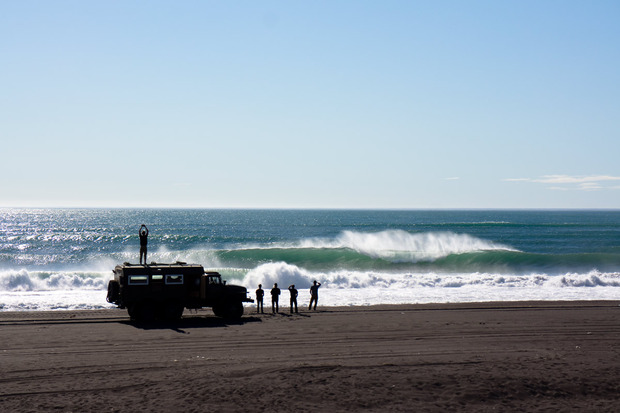
What are some of the unique challenges to shooting in these extreme environments?
That’s the craziest thing about these trips. For me it’s always about what I’m experiencing in the moment. When most people plan trips, they’re worried about rental cars and hotels. For me it’s, “Do I need to bring bear mace? How much local cash should I carry? Do the guys on my trip have survival skills? Can a helicopter get in here if we need a rescue?” It’s a totally different way of traveling, especially for surfing. It’s more like mountain travel. We’re approaching this the same way a mountaineer is approaching a summit; preparing for every situation. Travel is supposed to leave marks on you.
But all things considered, the planning is the hardest thing. Sometimes trips will take three years to get everything straightened out. On our last Russia trip, we visited the largest population you cannot access from car. The stories from theses places are so surreal, but it’s gnarly to actually be there. Still, the further I get away from my comfort zone, the better it is, that’s when you’re really going to have meaningful experiences.
Rather than just capturing images like you’re caging animals, I try to compose photos with the same skill and quality the way a conductor might direct an orchestra
Can you tell me a bit about your creative process when you’re shooting?
I can get esoteric about it and sometimes it feels hard to explain. I put a lot of thought into the images I like to take. I don’t just go out and shoot. Rather than just capturing images like you’re caging animals, I try to compose photos with the same skill and quality the way a conductor might direct an orchestra. I like to shoot images that are easily digestible. I try to de-clutter and simplify in my work. It allows the brain to see an image and gives the viewer the sense of being there—right there, in that place—rather than trying to figure out what it is. The location should always speak first.
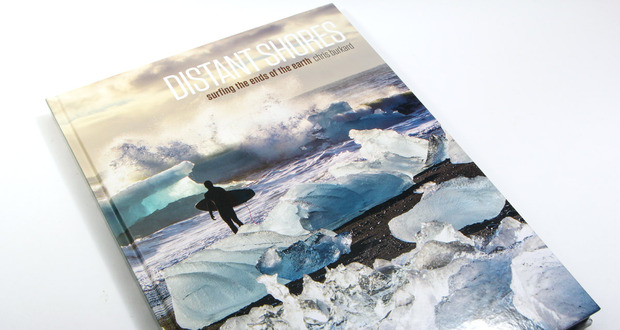
When I travel I don’t like to over-educate myself before I get there. With the internet you can plan every detail of a trip and almost know every little spot before you get there. I like to keep myself open to new experiences. That’s a part of traveling to an unfamiliar place that’s sort of lost these days and it speaks in my work. I’m not chained to a schedule or influenced too much by other people’s experiences in that place.
In terms of inspiration, the toughest thing is nowadays we can find inspiration everywhere within the one inch space our iPhone screens. For me it’s a mixture of being inspired online, but not overstimulated—so it doesn’t take over you. It’s also about getting out in nature and always trying to see something new. For me, it’s about seeing a new horizon. Reaching out for new perspectives and new places. That’s the premise with “Distant Shores.” The book really sums up the past eight years of my life. There’s not necessarily a storyline, the photos tell the story.

Any stories from your travels that stand out?
I got the full experience the first time I went to Russia [laughs]. Before we left customs I was in a jail cell. My passport had the wrong date on it and we argued about it for three hours. I was in Vladivostok, a port city on the Sea of Japan. It’s like the Wild West out there. There are some kind of odd values to an outsider for sure. Everyone else in my crew got to go through customs and we all submitted our visa dates the same way—mine were just wrong. I spent 24 hours in a dirty holding cell—it was basically a really gnarly hotel room with a guard at door. Then I got deported and left on a flight back to Korea [laughs]. When I went back in 2012, it was sort of a redemption but I was scared and a little nervous it would happen again.
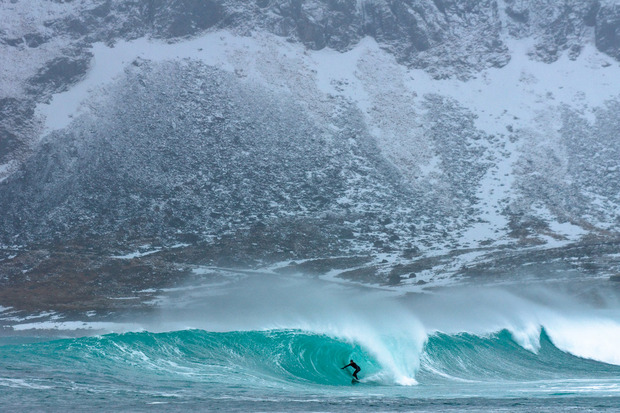
What was the last piece of art you bought?
I’m a big collector of flags, I really like flags. We have this huge California Republic hand-stitched cotton flag in a wooden frame a friend made for me. l love old Americana flags. I have photos up my office, but that’s the last thing I want to look at sometimes. I like things that have textural qualities. There are a lot of young photographers I admire; sometimes it’s almost hard to narrow it down. I find a lot of my inspiration outside of surfing. It’s hard for photographers to stand out in a sea of good work, but there’s a guy based in Brooklyn, Forest Woodward, he shoots a lot of climbing and adventure work. Another favorite is Corey Arnold. He is a commercial fisherman and professional photographer who shoots and works a lot in Alaska. His stuff is really inspirational.
I get asked a lot of technical questions [about photography] and for me the main thing that comes to mind when I think about photos is; I could care less about the f-stop, the shutter speed or the ISO. If you’re not inspired and you’re not sharing your work, then what are you doing? If your only focus is business, then you’re not sharing. At the end of the day, they’re [photos] all big fish on the wall; they’re the ones that got away, the stories you’ll tell. That’s in summation your life story as a photographer. I think that’s really how we as photographers look at it. You’re writing your life story through your photos, so make sure you’re loving the stories you want to tell.
Chris Burkard’s latest hardcover book “Distant Shores” is available online from his web-store and Amazon. His entire library—including select prints—is available online.
Portrait by Mark McInnis, book photo by Hans Aschim, all others courtesy of Chris Burkard











